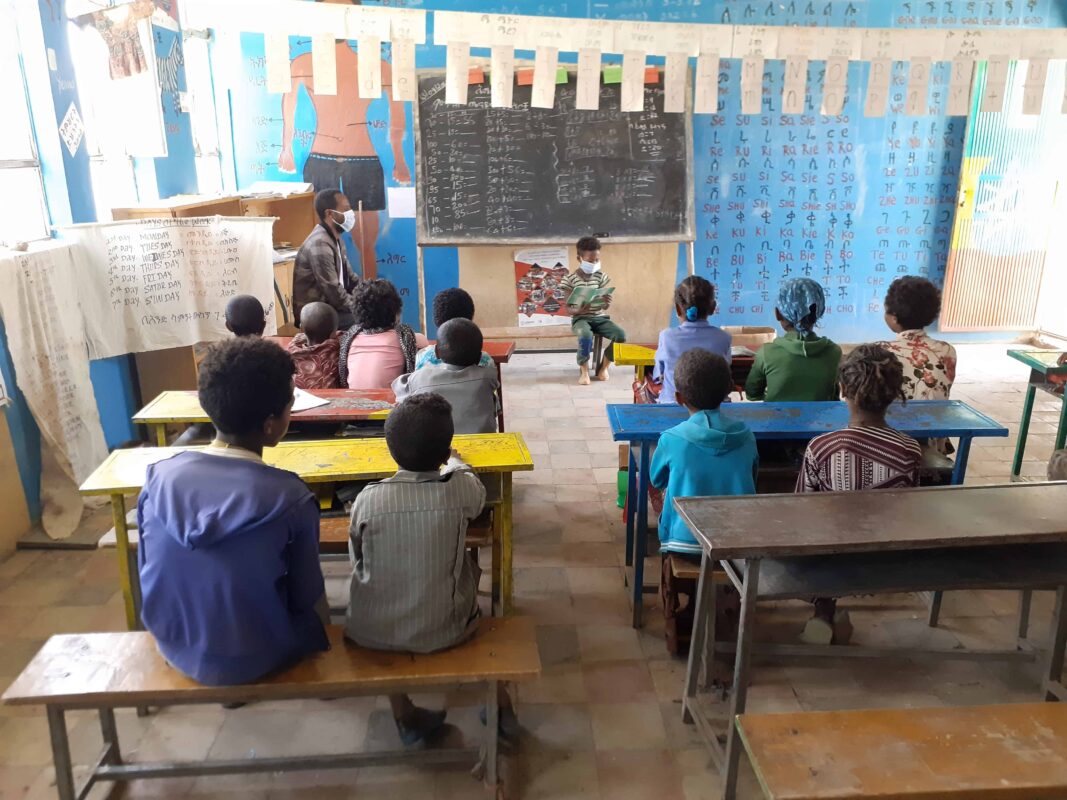The READ II program provided training to more than 27,000 Amharic and English language teachers and school directors at 3,000 READ II interventions schools in EthiopiaAmhara Region of Ethiopia Last year, when schools reopened in Ethiopia in September, Temesgen Meseret, 9, was one of the least performing students in the classroom. He was not able to identify letters, read words properly and was one of the least performing students in his class.
But Meseret, a second grader, can now read textbooks and other supplementary reading materials at his grade level. He’s shown higher engagement by actively participating and volunteering to read aloud for the class.
“Previously, I was not able to read. I had a difficulty in identifying letters and sounds,” he says. “But now I can read anything on my level. I even read stories from my books to my parents and siblings.” He has four siblings and is the youngest.
Meseret says his improvements are a result of his instructor’s new teaching approach, and he also attends reading camps funded by U.S. Agency for International Development, which are a part of the READ II project. (Children are encouraged to borrow supplementary reading materials from the camp to use at home.)
The USAID-funded trainings introduce new methods and techniques to educators to improve low reading comprehension rates amongst primary school students in Ethiopia, which was recently reported by Early Grade Reading Assessment studies. The READ II program provided training to more than 27,000 Amharic and English language teachers and school directors at 3,000 READ II interventions schools in Ethiopia. Since the training workshops, students have shown progress in their reading comprehension skills.
Eniyew Setargie, the school director of Domma Primary School, has noticed successes amongst teachers and students since the trainings as well.

“The overall support of the project is improving the performance of students’ reading abilities. Mother tongue teachers who are trained by the project are delivering better too,” says Setargie.
One teacher, Ewnetu Muniye, has taught Amharic language for more than 10 years using traditional lecturing styles. After attending the USAID Read II training, he adopted a new teaching approach that’s more interactive and focused on teamwork and collaborative assignments.
“The training I received from the [READ II] project opened a new horizon on how to engage and teach children to learn to read and write,” says Muniye. “I employ student-centered, participatory and entertaining approaches when teaching students to learn reading and the results are remarkable.”
One strategy that he now includes is the “I do, we do, you do,” which is when the teacher first shows students how to complete a task or pronounce words, then the class collectively attempts at the task, then the student independently completes it.
Muniye is optimistic about the lasting impacts that new yet small adjustments will have on students’ learning experience.
“Very simple things we create in the classroom help students learn better,” he says.